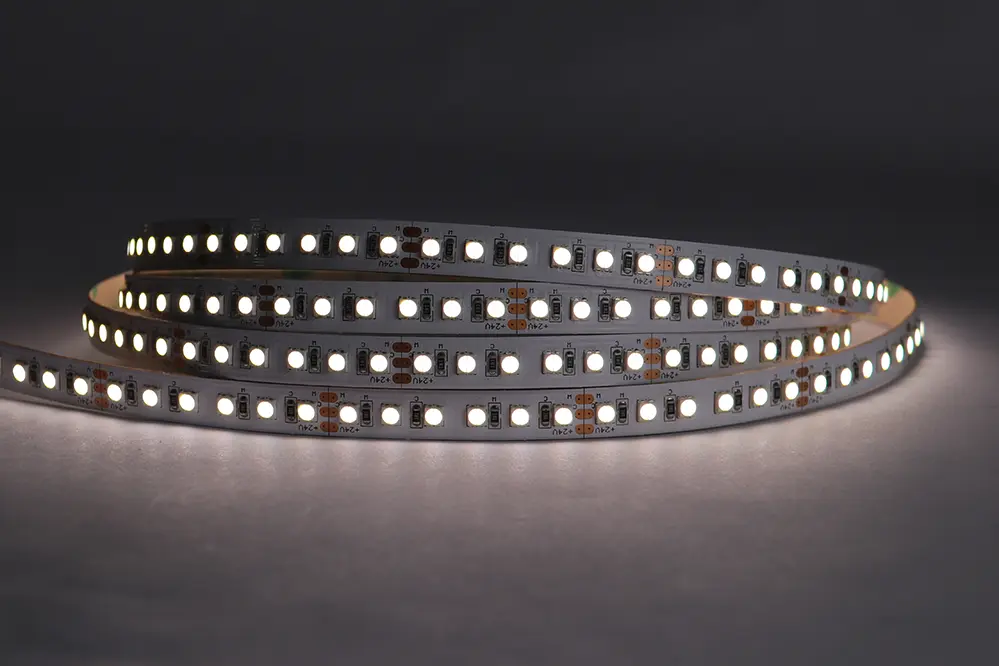Choosing the right LED strip light color temperature and using LED strip lights with advanced LED lighting, ensuring adequate lumens, and considering the light quality, can transform a dull room into a vibrant, inviting space. Imagine walking into a living room bathed in a warm white, golden glow that instantly makes you feel at home. This simple change can significantly impact the ambiance and functionality of any room. Understanding how to choose LED strip color temperature is crucial for achieving the desired effect.
The importance of selecting the correct LED strip lights with the appropriate color temperature and considering energy efficiency cannot be overstated. According to a study by the American Lighting Association, lighting can influence mood, productivity, and even sleep patterns. Surprisingly, 80% of homeowners are unaware of how different color temperatures can affect their living spaces. This lack of knowledge often leads to poorly lit environments that fail to meet their potential.
By delving into this topic, you will discover the nuances of LED strip color temperatures, their impact on energy efficiency, and how to make informed decisions. This guide will provide valuable insights and practical tips to help anyone create the perfect lighting atmosphere. Continue reading to unlock the secrets of choosing the ideal LED strip color temperature for any space.
Understanding Color Temperature
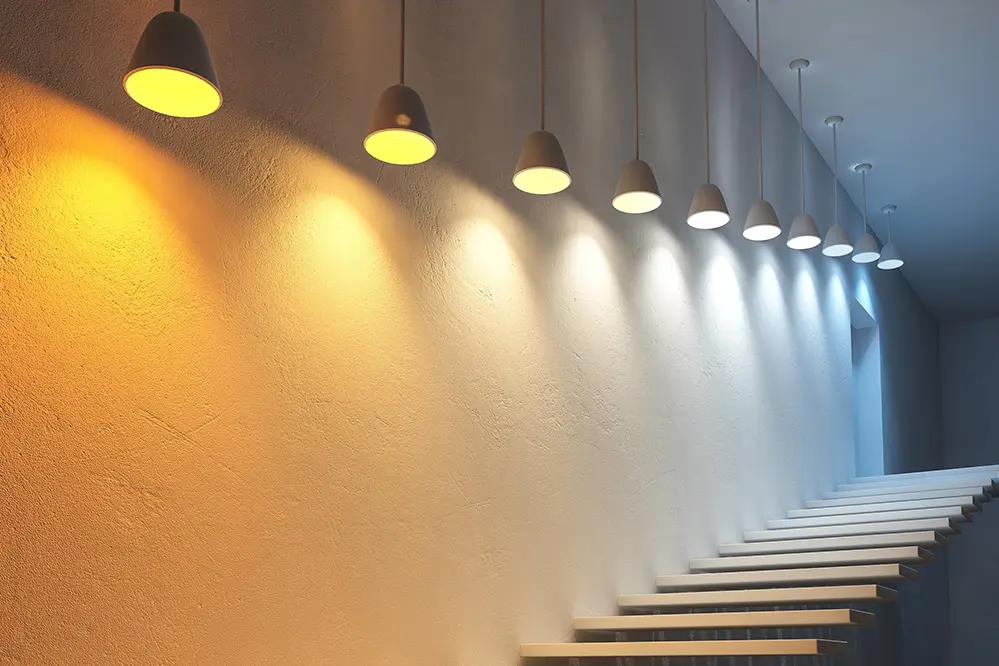
Color temperature refers to the perceived warmth or coolness of light emitted by a source.
Since 2016, artificial lighting, including LED technology, has evolved significantly, allowing consumers to select from a wide spectrum of color temperatures tailored to various needs and settings.
In essence, warmer color temperatures, typically around 2700K to 3000K, emit a cozy, yellowish light ideal for relaxation and intimate gatherings.
Conversely, cooler color temperatures, starting from 4000K(Natural White) up to 6500K(Cool White), offer a crisp, blueish light, often part of white light, that enhances concentration and is perfect for workspaces or areas requiring precision lighting.
Understanding these nuances helps in choosing LED strip lights with the right color temperature to enhance one’s environment effectively.
Why Color Temperature Matters
Color temperature significantly influences the atmosphere and functionality of a space.
Since 2016, advancements in LED technology have expanded the range of options available, permitting tailored lighting solutions for every setting.
For instance, a warm white color temperature brings a sense of comfort and intimacy, crucial for spaces meant for relaxation.
On the other hand, cool color temperatures play a vital role in enhancing focus and productivity in areas like offices or workshops.
Ultimately, selecting the right LED strip lights with the correct color temperature can transform a room’s entire ambiance and utility.
Common LED Strip Color Temperatures
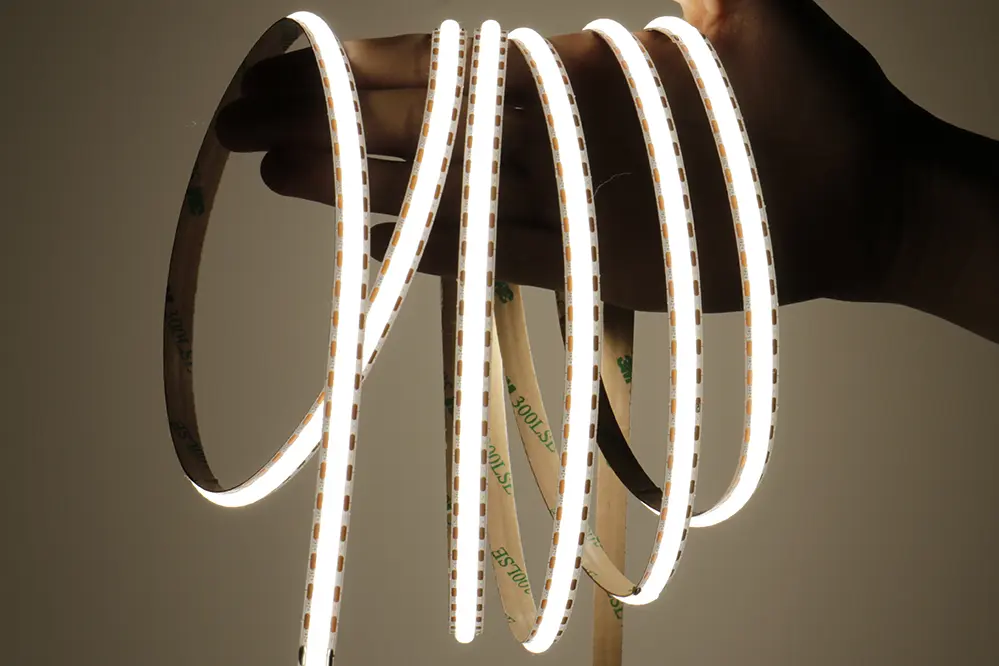
Common LED strip color temperatures(measured in Kelvin) vary widely, each providing distinctive hues that suit specific environments, and their uses reflect the desired ambiance.
Typically, they range from 2700K to 6500K, offering various shades of white light.
These temperatures, spanning from warm to cool whites, enable users to achieve a spectrum of lighting effects tailored to residential, commercial, and industrial purposes. For instance, a softer 2700K LED strip promotes relaxation, warmth, and coziness in living spaces.
Meanwhile, a 5000K LED strip illuminates with a bright, daylight-like radiance—perfect for areas where task-oriented activity prevails, enhancing clarity and precision. By understanding these common color temperatures, one can infuse their space with the ideal lighting atmosphere suited to their needs and aspirations.
How to Choose LED Strip Color Temperature
Selecting the perfect LED strip color temperature requires an understanding of both aesthetic and functional goals. Professionals must weigh the intended atmosphere against practical requirements to ensure optimal lighting results.
For those seeking tranquil environments, opting for LED strips within the 2700K to 3000K range is ideal. These warmer hues imbue spaces with a soft, inviting glow. Alternatively, achieving an invigorating and dynamic setting demands cooler temperatures, such as 4000K or above, to foster energy and focus. Whether designing a serene oasis or a bustling workspace, thoughtful color temperature selection can significantly enhance any environment.
Assess Your Space
Understanding the unique qualities and uses of a space informs lighting choices that enhance both functionality and aesthetics.
Correctly chosen lighting can dramatically improve productivity and mood in any environment.
Consider the room’s purpose, layout, and existing decor. These elements guide your decision on warmth or coolness of LED lighting, balancing comfort with efficiency.
Analyzing natural light sources and discussing preferences with occupants will ensure the LED strip color temperature complements the existing atmosphere.
Determine Desired Ambiance
When considering how to choose LED strip color temperature, first pinpoint the ambiance you wish to create.
In 2019, architects emphasized that having the right lighting dramatically impacts the feel and functionality of spaces, enhancing one’s overall experience.
Thus, it’s essential to think about the room’s intended purpose—is it a comforting retreat or a vibrant workspace that requires a sharper focus and energy for tasks?
Exploring the harmony between the chosen hue and the space’s decor ensures that it not only creates the desired ambiance but also complements the surroundings, enhancing visual appeal.
Ultimately, the right lighting choice can transform any environment, evoking moods and setting the atmosphere for various activities.
Consider Task Lighting Needs
When selecting LED strip color temperatures, task-specific requirements are paramount. Understanding these needs ensures optimal lighting functionality.
- Workspace Illumination: For offices or workstations, a cooler color temperature (4000K-6000K) is ideal, promoting focus and reducing eye strain.
- Study Areas: Study rooms benefit from cooler whites (3500K-5000K), enhancing concentration and providing ample light for reading.
- Kitchen Lighting: In kitchens, cool to neutral whites (3000K-5000K) brighten worktops, making food preparation safer and more efficient.
- Craft and Hobby Zones: Areas dedicated to detailed tasks should use cooler whites (4000K-6000K) for better visibility and accuracy.
Balancing personal preference with functional needs ensures a practical and pleasant lighting environment.
By considering these specific tasks, one can create a space that is both efficient and inviting.
Evaluate Color Rendering Index (CRI)
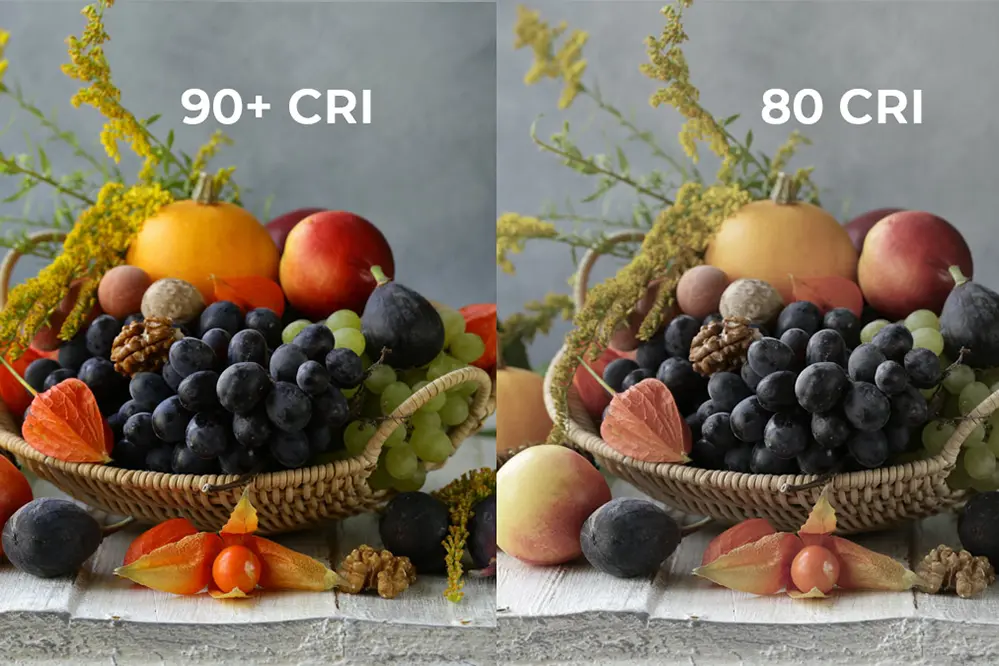
When selecting LED strips, evaluating the Color Rendering Index (CRI) is crucial for visual accuracy and aesthetic quality.
CRI measures a light source’s ability to reveal colors faithfully in comparison to natural light. LED strips with a higher CRI provide more vibrant, true-to-life colors, which is particularly important in environments where color accuracy is critical, such as art studios and retail spaces. A CRI of 90 or above is recommended for applications requiring precise color differentiation.
Furthermore, a high CRI enhances the overall ambiance of a space, offering a more inviting and visually appealing atmosphere. In residential settings, where comfort and warmth are desired, high-CRI LED strips can dramatically improve the quality of light, making interiors look more lively and natural.
Investing in high-CRI LED strips not only caters to technical necessities but also elevates the overall lighting experience. By prioritizing CRI in their selection process, individuals can ensure their lighting solutions meet both functional and aesthetic demands, fostering an environment that is conducive to productivity and well-being.
Matching Color Temperature to Different Rooms
Selecting the appropriate color temperature for each room is essential for creating the desired ambiance. Cooler color temperatures, ranging from 5000K to 6500K, are optimal for task-oriented spaces such as kitchens and workshops, where clarity and focus are paramount. In contrast, warmer color temperatures, between 2700K to 3000K, are better suited for living rooms and bedrooms, as they foster a cozy, relaxing environment that promotes rest and comfort. By thoughtfully matching color temperatures to the specific function of each room, one can enhance both the functionality and atmosphere, ensuring a harmonious and inviting home.
Living Room
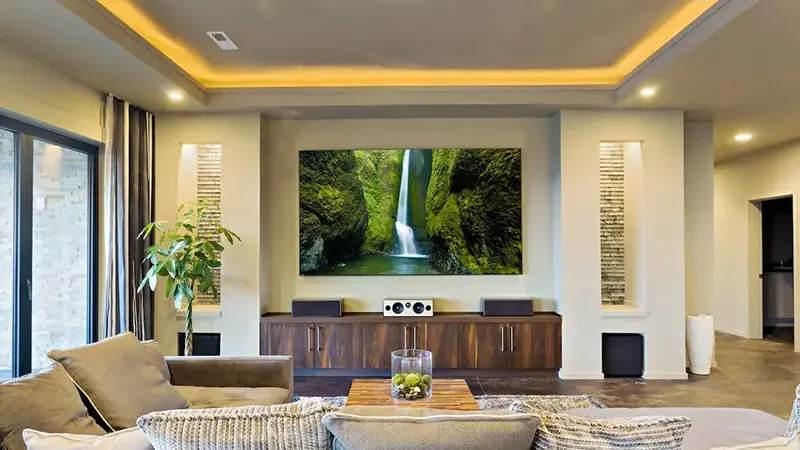
Creating a cozy and inviting atmosphere with warm white lighting is key.
When selecting the appropriate LED strip color temperature for a living room, one should aim for warm tones. The ideal temperature falls between 2700K and 3000K, which emits a soft, yellowish light. These shades are particularly effective in fostering relaxation, making the space perfect for unwinding after a long day.
This choice, enhanced by LED strip lights, encourages comfort and intimacy.
A 2700K to 3000K LED strip will imitate the soothing glow of traditional incandescent bulbs. In addition to providing optimal lighting conditions, these warmer tones can enhance the colors and textures of the room, adding depth and richness to the decor.
By choosing the right color temperature, such as warm white, in the living room, they can create a space that exudes warmth and hospitality. Such thoughtful selection not only elevates the aesthetics but also significantly enhances the overall ambiance, making every gathering a more delightful and memorable experience.
Kitchen
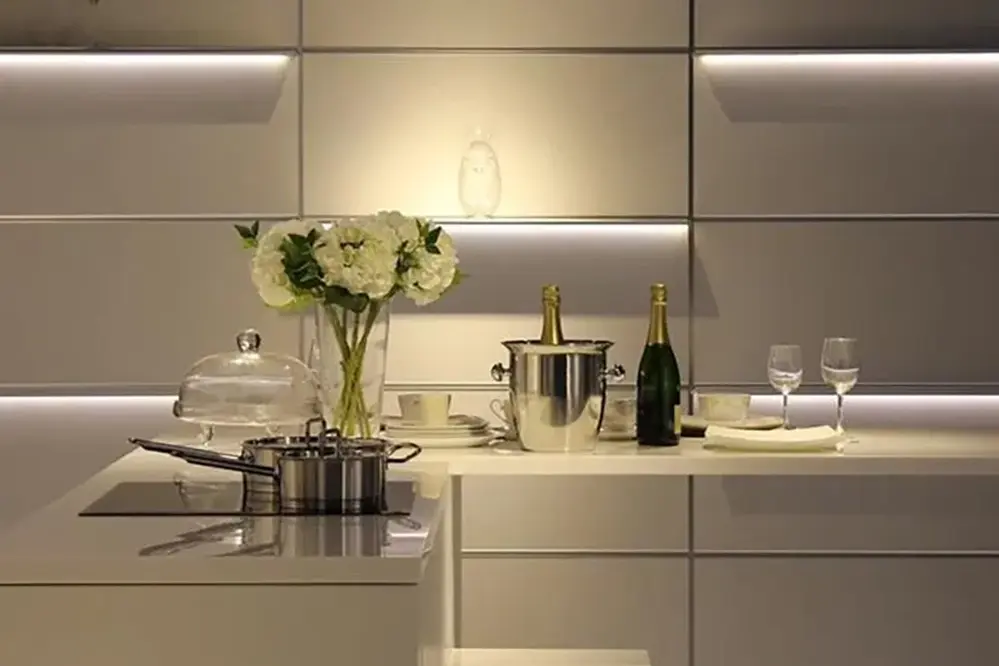
Enhancing the kitchen environment is vital.
Choosing the right LED strip color temperature for the kitchen necessitates consideration of both functionality and ambiance. Ideally, one should opt for neutral white- a cooler temperature range, typically between 4000K and 5000K. This range provides clear, bright illumination that facilitates food preparation and highlights the kitchen’s cleanliness and modernity.
This decision fosters a productive atmosphere.
Neutral white light between 4000K and 5000K enhances visibility and focus, ensuring that every culinary task is undertaken with precision and ease. This lighting choice not only bolsters efficacy in the kitchen but also underscores its sleek and contemporary design.
Therefore, selecting the appropriate color temperature is paramount for both practicality and aesthetics in the kitchen. It ensures a well-lit space that is both functional and inviting, encouraging culinary creativity and making every cooking endeavor an enjoyable experience.
Bedroom
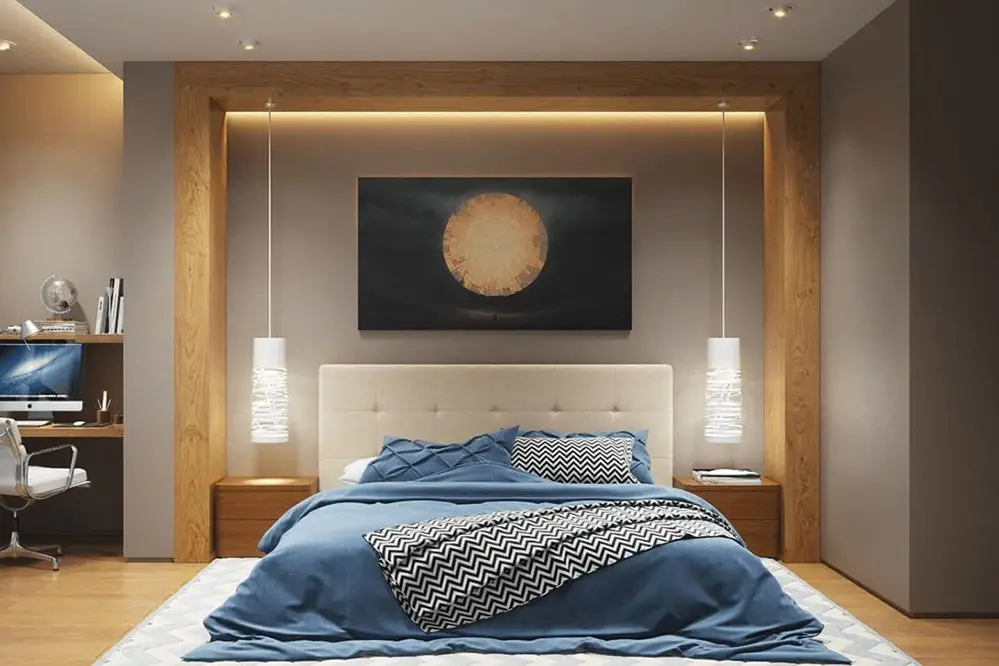
Creating a serene bedroom environment is essential for restful sleep.
For the bedroom, it is recommended to choose a warmer color temperature, typically between 2700K and 3000K. This range produces a soft, cozy light that promotes relaxation and calmness, making the bedroom a tranquil retreat from the hustle and bustle of daily life.
Moreover, warm light fosters an inviting and comfortable atmosphere in the bedroom. An LED strip within this temperature range complements ambient lighting and enhances the overall aesthetic, contributing significantly to a soothing and restful space.
Ultimately, the priority in the bedroom is to foster an environment conducive to relaxation and rejuvenation. Selecting the right LED strip color temperature not only supports physical rest but also boosts mental well-being, creating a harmonious sanctuary for winding down after a long day and preparing for the next.
Bathroom
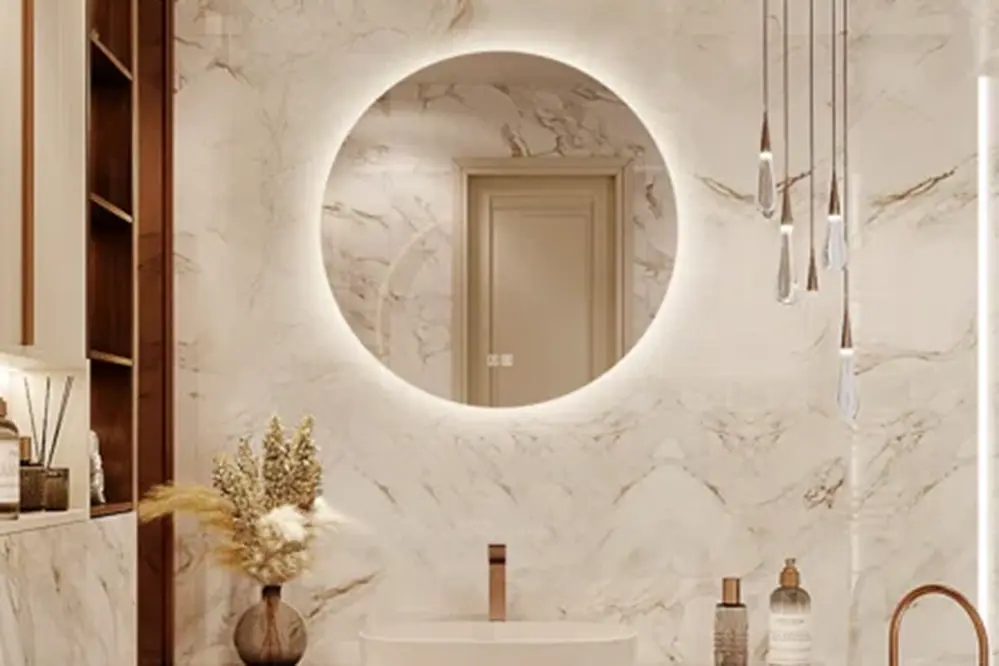
In the bathroom, lighting plays a crucial role, balancing both functionality and ambiance.
For this space, it is generally recommended to opt for a cooler color temperature between 4000K and 5000K. This range emits a bright, white light that enhances visibility, ensuring that tasks such as grooming and makeup application are performed with precision and clarity. These color temperatures mimic the effect of natural daylight, aiding in accurate color rendering, which is essential for these tasks.
Additionally, cooler light creates a clean and invigorating environment in the bathroom. It provides the crispness necessary for a fresh start to the day, helping to energize and wake up the senses. Cooler temperatures also highlight the bathroom’s design elements, such as tiling and fixtures, bringing out their best features.
By selecting an appropriate LED strip color temperature, one ensures that the bathroom is both practical and aesthetically pleasing. This thoughtful choice enhances daily routines, contributing to a space that is both efficiently functional and delightfully invigorating. Through this balance, they transform their bathroom into a personal oasis that starts every day on a bright, positive note.
Tips for Testing LED Strip Color Temperatures
Selecting the ideal LED strip color temperature involves thoughtful consideration, nuanced testing, and a keen awareness of one’s lighting needs. Testing different color temperatures can substantially impact the ambiance and functionality of a space.
First, clear the room of any natural light sources impacting the test’s accuracy.
Next, evaluate various color temperatures within the specific area where the strips will be installed (taking notes during observations).
Subsequently, assess how each temperature interacts with the room’s décor and intended use.
Make use of dimmable LED strips to test various brightness settings, which can influence the perceived color temperature.
Finally, ensure that those testing the temperatures spend enough time under each setting, allowing for a comprehensive assessment of comfort and visual appeal. Testing under various conditions—day, night, and intermediate lighting—will provide the best insight.
In essence, the process allows one to tailor the lighting exactly to their needs. Precision testing ensures that all aspects align ideally with one’s style and practical requirements.
Conclusion
Choosing the right LED strip color temperature is crucial for enhancing ambiance and functionality. The process involves intentional testing under various conditions to understand each option’s impact, driven by individual preferences. Fine-tuning color temperatures tailors the environment to specific needs, elevating aesthetics and daily experiences. Thoughtful testing and adjustments result in optimal lighting that inspires, comforts, and elevates well-being.
For those seeking expert guidance and high-quality products, consider reaching out to Unitop, a professional Chinese manufacturer of LED strip lights and LED neon strips. With their extensive experience and commitment to excellence, Unitop can provide tailored solutions that meet your specific lighting needs. Whether you’re looking to enhance your home, office, or any other space, their expertise ensures you achieve the perfect balance of aesthetics and functionality. Contact Unitop today to transform your lighting vision into reality.
